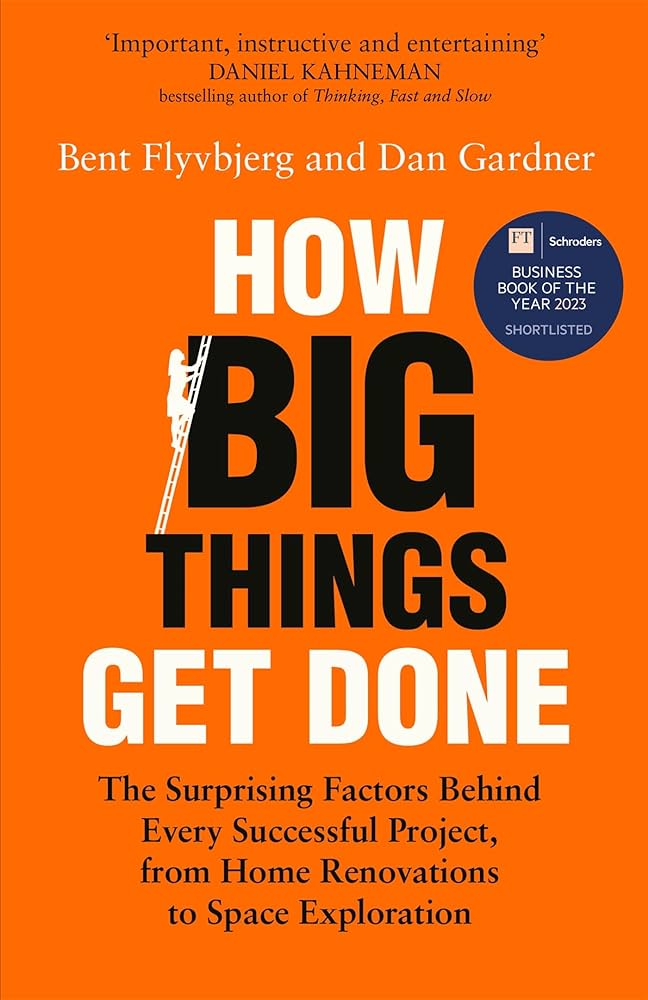Macmillan, 2023 , £18.00
Reviewed by Nicholas Falk
The critical importance, cost and longevity of infrastructure makes strategic planning vital. As it crosses professional fields, it is a good subject for urbanists to study and reflect on. In the most comprehensive ever study of why big projects so often fail, the Danish author’s first recommendation is ‘Think slow, act fast’. His research into 16,000 projects discovered that almost all large infrastructure projects go over budget and take much longer than expected. In total 8.5% of projects hit their targets on both cost and time. Rail projects were typically 28% over their budget on cost, some of the worst offenders, in contrast, interestingly, to wind power and roads, which both perform well on average.
The book is an easy and at times gripping read, with some fascinating short case studies on the winners and the losers. There is also a short section at the end on Eleven Heuristics for Better Project Leadership, which every politician should read before promoting a big project. Urbanists will like them, as it starts with Hire a masterbuilder, that is a team with a track record of success. The author turns out to have advised Gordon Brown when he was Prime Minister and has been involved in unscrambling rail projects that were going disastrously wrong, with interesting case studies from California and Hong Kong. The book ranges from tackling climate change (where wind and solar power are so much more cost-effective than nuclear), to dealing with the challenges of home refurbishment. It therefore represents exceptional value for money, and can be thoroughly recommended.
The unfortunate saga of High Speed 2, which seems unlikely ever to get beyond Birmingham, is typical of a situation where political values change during the long period of implementation. The basic question of why High Speed 2 was needed in the form it has taken was never satisfactorily answered before starting. A politician who backed it told me that ‘every other European country has one’ which is understandable, but not a sufficient justification. Furthermore the more complex the project, the greater the scope for something to go wrong. Failure is absolutely predictable when the people involved are out of their depth, as with the unfortunate winner of the competition to design the Sydney Opera House.
Architects are particularly vulnerable to the lure of designing something unique. It takes a very exceptional and experienced architect like Frank Gehry to design the Guggenheim Museum in Bilbao, and get it built without any scandal.
Bent Flyvbjerg concludes that the keys to success are to break large projects into smaller ones, or modularity, and wind turbines and solar farms turn out to be excellent examples. He writes encouragingly ‘When small can scale up and become huge fast, small experiments have huge potential. All it takes is imagination and tenacity.’ Repetition and experience brings costs down through a learning curve, which is why my book Cities As Solutions is based largely on schemes that have been shown to work, including many which have been assessed for awards by the Academy of Urbanism. My favourite slogan is to call for ‘Big ideas, small steps’ or what I call Balanced Incremental Development. This was the process that built neighbourhoods that have long held their value, such as Metroland in North West London or Bloomsbury in central London. It could also hold the key to overcoming the challenge Britain faces in building new homes and neighbourhoods that are also affordable and energy efficient.






